
How to Use Adafruit PCF8523 RTC: Examples, Pinouts, and Specs
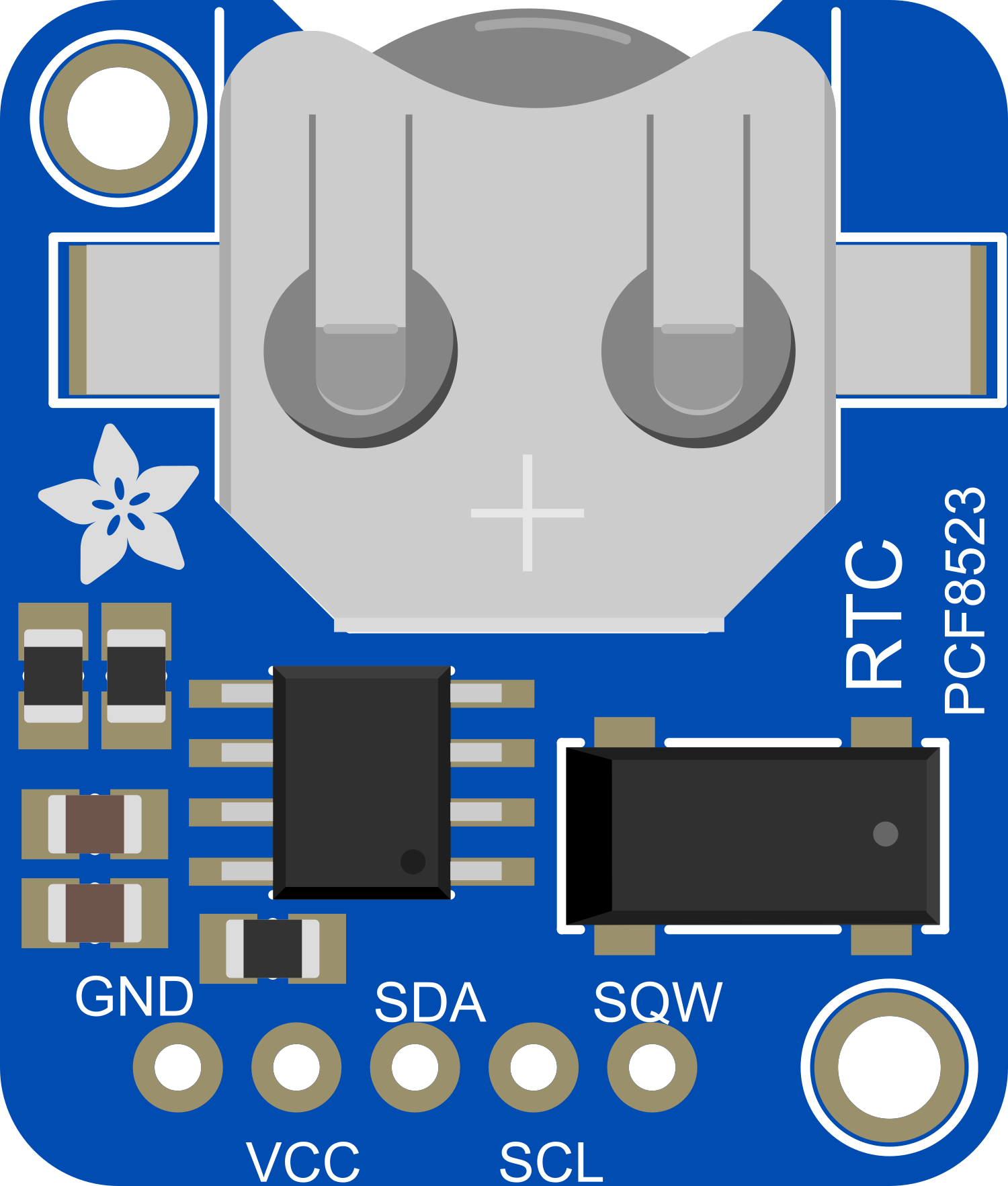
 Design with Adafruit PCF8523 RTC in Cirkit Designer
Design with Adafruit PCF8523 RTC in Cirkit DesignerIntroduction
The Adafruit PCF8523 RTC is a Real Time Clock (RTC) module that offers precise timekeeping capabilities. It is designed to maintain accurate time with the help of a built-in crystal oscillator and can continue to keep time with a backup battery even when the main power supply is disconnected. This component is ideal for a variety of applications, including data loggers, alarm systems, and other time-sensitive projects.
Common applications and use cases:
- Clocks and watches
- Data logging with time stamps
- Time-based automation (e.g., turning lights on/off)
- Scheduling events in embedded systems
Explore Projects Built with Adafruit PCF8523 RTC
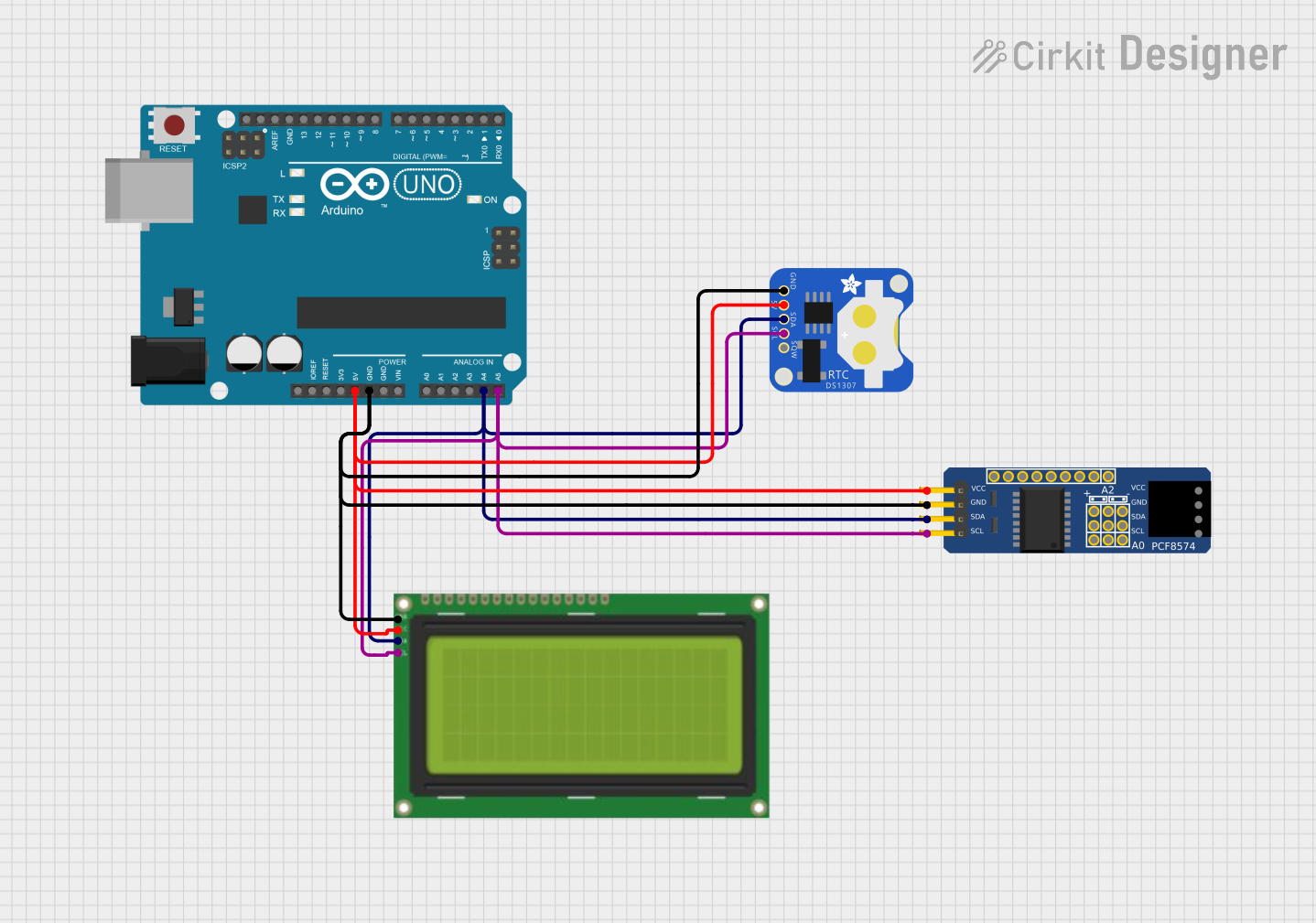
 Open Project in Cirkit Designer
Open Project in Cirkit Designer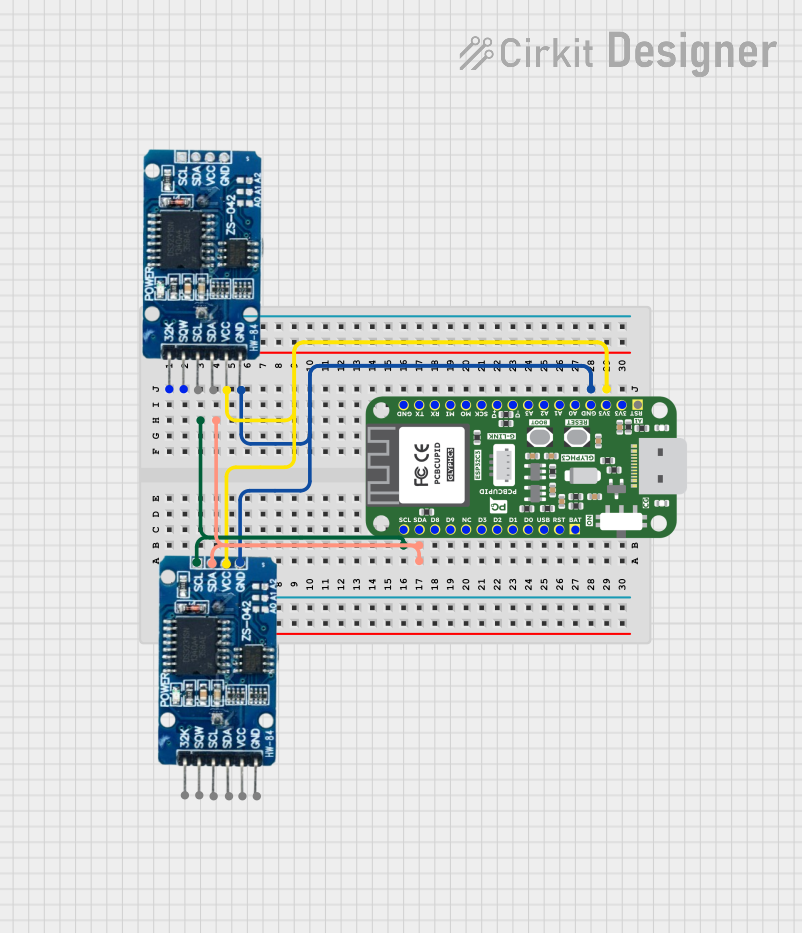
 Open Project in Cirkit Designer
Open Project in Cirkit Designer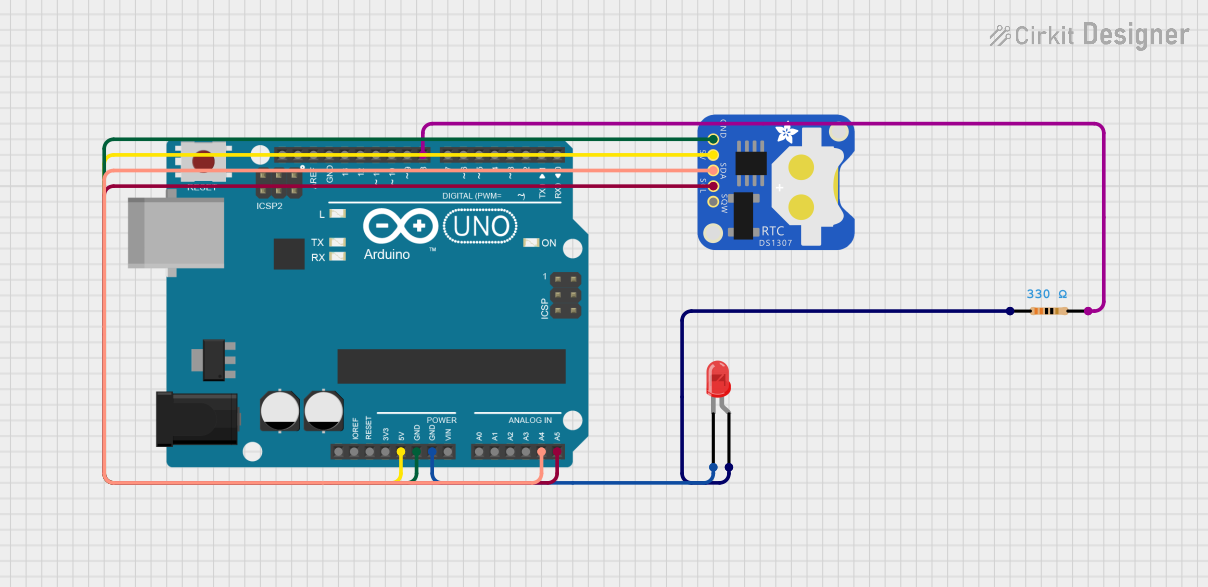
 Open Project in Cirkit Designer
Open Project in Cirkit Designer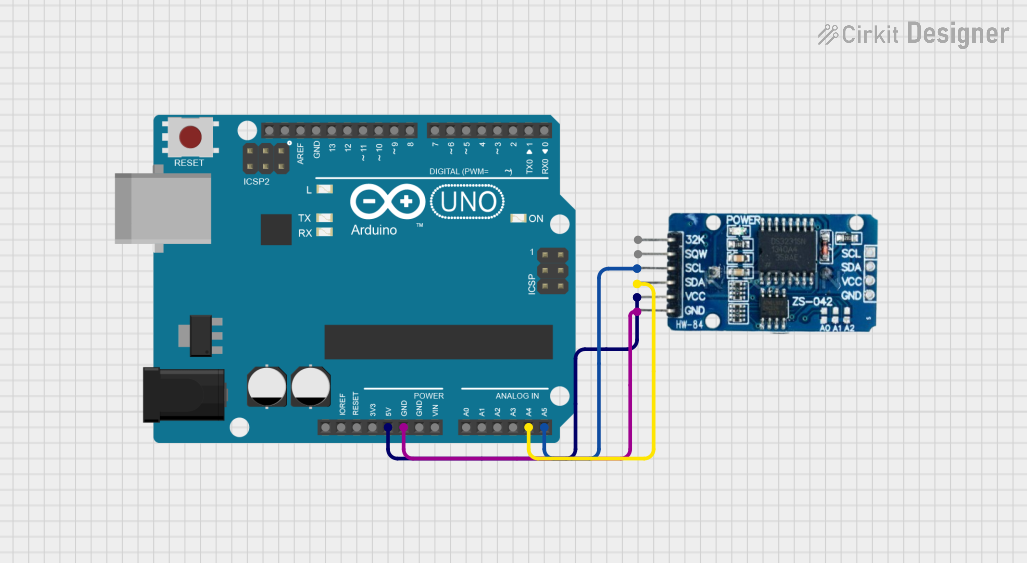
 Open Project in Cirkit Designer
Open Project in Cirkit DesignerExplore Projects Built with Adafruit PCF8523 RTC

 Open Project in Cirkit Designer
Open Project in Cirkit Designer
 Open Project in Cirkit Designer
Open Project in Cirkit Designer
 Open Project in Cirkit Designer
Open Project in Cirkit Designer
 Open Project in Cirkit Designer
Open Project in Cirkit DesignerTechnical Specifications
Key Technical Details
- Voltage Supply: 1.8V to 5.5V
- Current Consumption: 55 μA (typical)
- Time Accuracy: ±2ppm from 0°C to +40°C
- Battery Backup: Yes (CR1220 coin cell)
- Interface: I2C
- I2C Address: 0x68 (7-bit)
Pin Configuration and Descriptions
| Pin Number | Name | Description |
|---|---|---|
| 1 | VCC | Power supply (1.8V to 5.5V) |
| 2 | GND | Ground connection |
| 3 | SDA | I2C Data Line |
| 4 | SCL | I2C Clock Line |
| 5 | INT | Interrupt output (active low) |
| 6 | CLKOUT | Clock output for peripheral devices |
Usage Instructions
How to Use the Component in a Circuit
- Power Connections: Connect the VCC pin to a 1.8V to 5.5V power supply and the GND pin to the ground.
- I2C Connections: Connect the SDA and SCL pins to the I2C data and clock lines, respectively.
- Backup Battery: Insert a CR1220 coin cell into the battery holder to enable timekeeping during power loss.
- Arduino Connection: For use with an Arduino UNO, connect SDA to A4, SCL to A5, VCC to 5V, and GND to ground.
Important Considerations and Best Practices
- Ensure that the power supply voltage is within the specified range to avoid damaging the RTC.
- The I2C bus requires pull-up resistors; most Arduino boards have these built-in, but if you're using a different microcontroller, you may need to add them.
- When placing the backup battery, ensure the correct polarity to prevent damage to the RTC.
- For accurate timekeeping, avoid placing the RTC module near heat sources or components that generate significant heat.
Example Code for Arduino UNO
#include <Wire.h>
#include "RTClib.h"
RTC_PCF8523 rtc;
void setup() {
Wire.begin();
Serial.begin(9600);
// Check if the RTC is connected correctly
if (!rtc.begin()) {
Serial.println("Couldn't find RTC");
while (1);
}
// Check if the RTC has lost power and if so, set the time
if (!rtc.initialized() || rtc.lostPower()) {
Serial.println("RTC is NOT initialized, let's set the time!");
// This line sets the RTC to the date & time this sketch was compiled
rtc.adjust(DateTime(F(__DATE__), F(__TIME__)));
}
}
void loop() {
DateTime now = rtc.now();
// Print the current date and time
Serial.print(now.year(), DEC);
Serial.print('/');
Serial.print(now.month(), DEC);
Serial.print('/');
Serial.print(now.day(), DEC);
Serial.print(" ");
Serial.print(now.hour(), DEC);
Serial.print(':');
Serial.print(now.minute(), DEC);
Serial.print(':');
Serial.print(now.second(), DEC);
Serial.println();
// Wait for a second
delay(1000);
}
Troubleshooting and FAQs
Common Issues
- Time not accurate: Ensure the backup battery is installed correctly and has charge.
- I2C communication failure: Check the wiring, ensure pull-up resistors are in place, and verify that no other device on the I2C bus has the same address.
- No response from the RTC: Make sure the RTC module is properly powered and that the correct I2C address is being used in the code.
Solutions and Tips for Troubleshooting
- If the time is not accurate, replace the backup battery with a new one.
- Use an I2C scanner sketch to check if the RTC is detected on the I2C bus.
- Ensure that the Arduino libraries for the RTC are correctly installed and included in your sketch.
FAQs
Q: Can the PCF8523 RTC module be used with a 3.3V system? A: Yes, the module can operate from 1.8V to 5.5V, making it suitable for both 3.3V and 5V systems.
Q: How long will the backup battery last? A: The battery life depends on the quality of the battery and the environmental conditions but typically lasts for a few years.
Q: Is it necessary to use an external crystal with the PCF8523 RTC? A: No, the PCF8523 has an integrated crystal oscillator that provides accurate timekeeping.